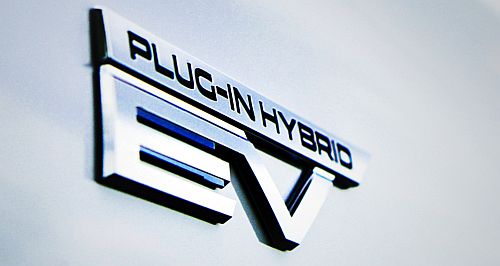Make / Model Search
News - Market Insight - Market Insight 2025Market Insight: Will FBT nuke PHEV sales?PHEV sales boom may tank after FBT break ends but long-term data shows solid growth8 Apr 2025 THE Australian Tax Office (ATO) was not fooling around when it dropped Fringe Benefit Tax (FBT) exemptions on low-emission plug-in hybrid vehicles (PHEV) on April 1, immediately adding thousands of dollars to the bottom line of new PHEV novated leases.
Under terms of the exemption, a PHEV buyer taking a novated lease on a vehicle that was priced under the 'fuel-efficient' Luxury Car Tax (LCT) threshold – currently at $91,387 – could potentially save close to $12,000 due to the removal of FBT, reflected in lower monthly payments over the term of the lease.
The end of the exemption and potential New Vehicle Efficiency Standards (NVES) price rises prompted a spike in sales of PHEVs that accelerated towards the March 31 end date, which, along with the arrival of several compelling new models, comprehensively ended any sense of stagnation in the PHEV sector of Australia's new-car market.
In a flurry of deliveries ahead of the FBT exemption’s expiry date, March sales of PHEVs were up 380 per cent. In hard numbers, 6932 PHEVs sold in March 2025 compared with 1444 for the same month in 2024.
Year-to-date sales tell a similar story with 13,711 PHEVs sold so far this year compared to 3548 for the corresponding period of 2024, while plotting PHEV sales data over the past few years shows an approximate doubling of volume every 12 months, with YTD numbers extrapolating to a continuation of that pattern in 2025.
Popular PHEV models include electrified variants of the Mitsubishi Eclipse Cross and Outlander, GWM Hava H6GT, BYD’s Sealion 6 SUV and Shark 6 ute, MG HS, Kia Sorento, Mazda CX-60 and CX-80, BMW’s X3 and X5, Various Volvos, the Lexus NX and numerous models from other manufacturers such as Cupra available across various segments.
The federal government’s rationale behind dropping the FBT perk on PHEVs is mooted in some quarters as being based on monetary concerns due to the exemption’s popularity with buyers of “fuel efficient” vehicles priced under the LCT threshold.
Forecasts put the program (including battery electric vehicles that have no exemption expiry date) at three times more in lost tax revenue than first planned, equating to $760 million over its first four years.
But federal Minister for Climate Change and Energy, Chris Bowen, speaking to media at the recent Sydney Everything Electric Expo, said otherwise.
“The reason we won't extend it or reverse that is because, frankly, it was a matter of good faith between me and the crossbench to get it through," he explained.
"The Greens and the crossbench made that a requirement of voting for the electric vehicle (FBT) tax cut in the first place.
"They said, 'We'll only vote for it if you promise to lift it from plug-in hybrids in April 2025.' I agreed to that to get it through.
"Having made that compromise, I can't in good faith say to the Greens and the crossbench, 'Oh, I've changed my mind' ... I didn't want to lift it off plug-in hybrids, I had to do it to get the legislation through or there would've been no tax cut at all. And having done that, you've got to stick to it."
The FBT exemption will continue beyond April 1 on battery electric vehicles (BEVs) under the LCT threshold.
Despite lobbying from the car industry to extend the exemption – coupled with exponential growth in diverse PHEV availability and strong sales – the federal government has unequivocally ruled out an exemption extension.
Bruce Hampel, Mitsubishi Motors Australia Limited’s new general manager of product strategy and product public relations said: “From our point of view, this is not the right thing to do as PHEVs are (currently) the most suited electrified offering for Australian consumers.
“It’s the right tech at the moment and despite the FBT changes, we anticipate sales to grow as people see the benefits of the technology.”
“The recent PHEV sales spike saw a rush from consumers to realise PHEV benefits which (in Mitsubishi’s case) also offers vehicle to grid (V2G) capability that allows owners to power their home of office rather than a single appliance as in V2L.
Mr Hampel said under Mitsubishi’s Momentum 2030 plan, more electrified vehicles will follow but he would not be drawn on which ones.
His views were echoed elsewhere with David Smitherman, CEO of BYD's Australian distributor EVDirect, who last month telling Australian automotive publication Drive the company would like to see the FBT exemption for PHEVs extended.
"I think it makes sense. Absolutely. I ask myself the question, what's the purpose of that legislation? It's to help with the energy transition, and it's clearly working. So absolutely it should be extended.
"Particularly for the technology we've embraced, which is battery-first technology. You can drive our cars as full EVs, and I feel as though that should be recognised in the legislation. It's not."
He predicted a dip in demand for PHEVs once the exemption expires, but played down its impact.  |
Click to shareMarket Insight articlesResearch Market Insight Motor industry news |









Facebook Twitter Instagram